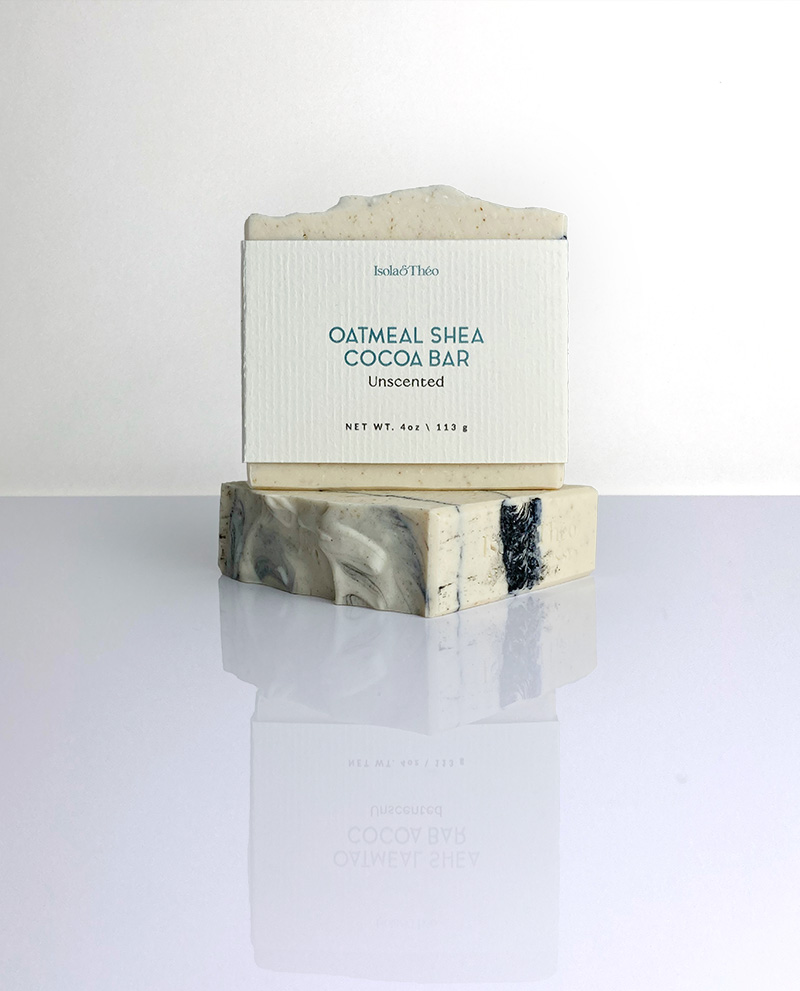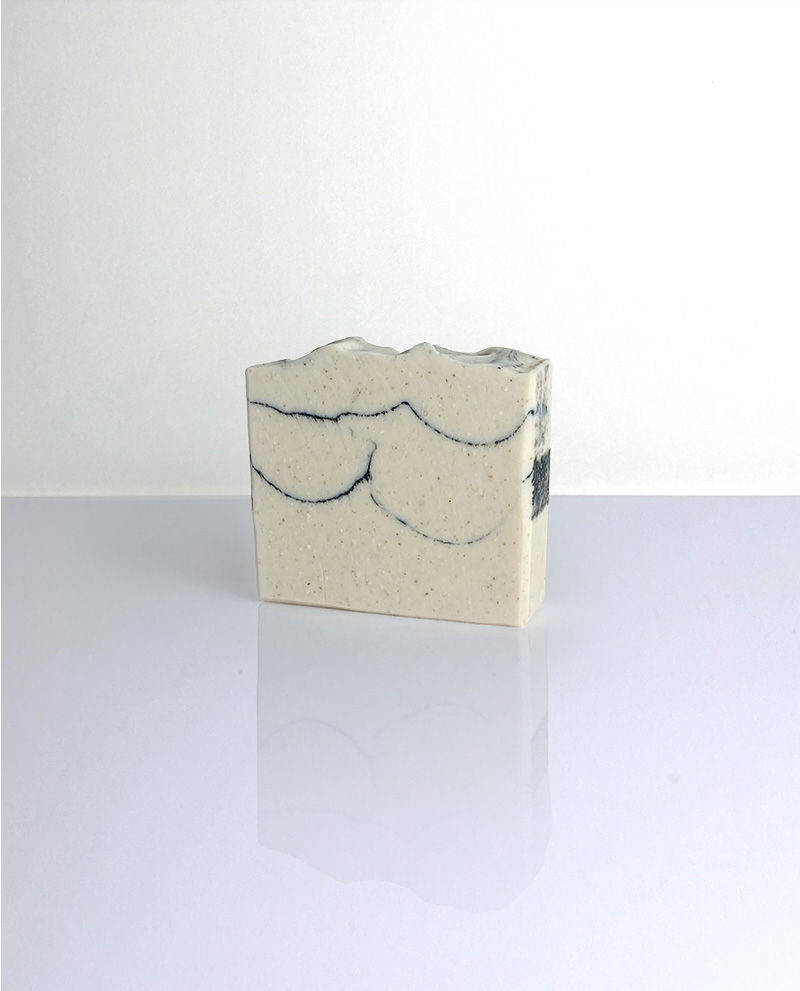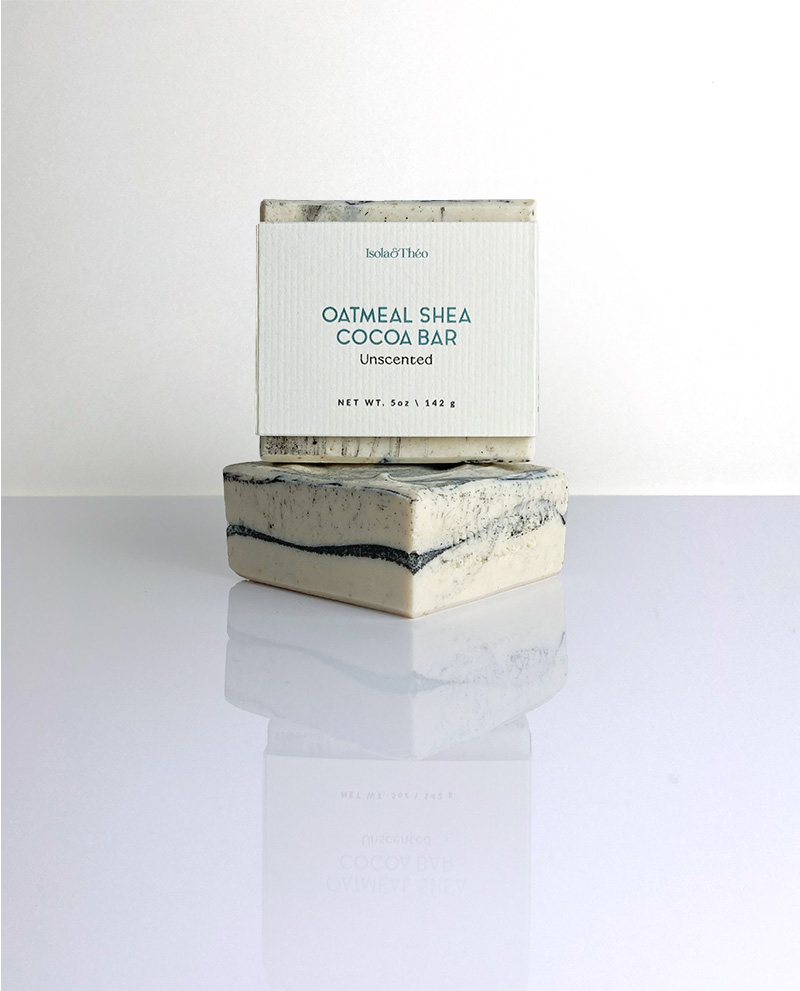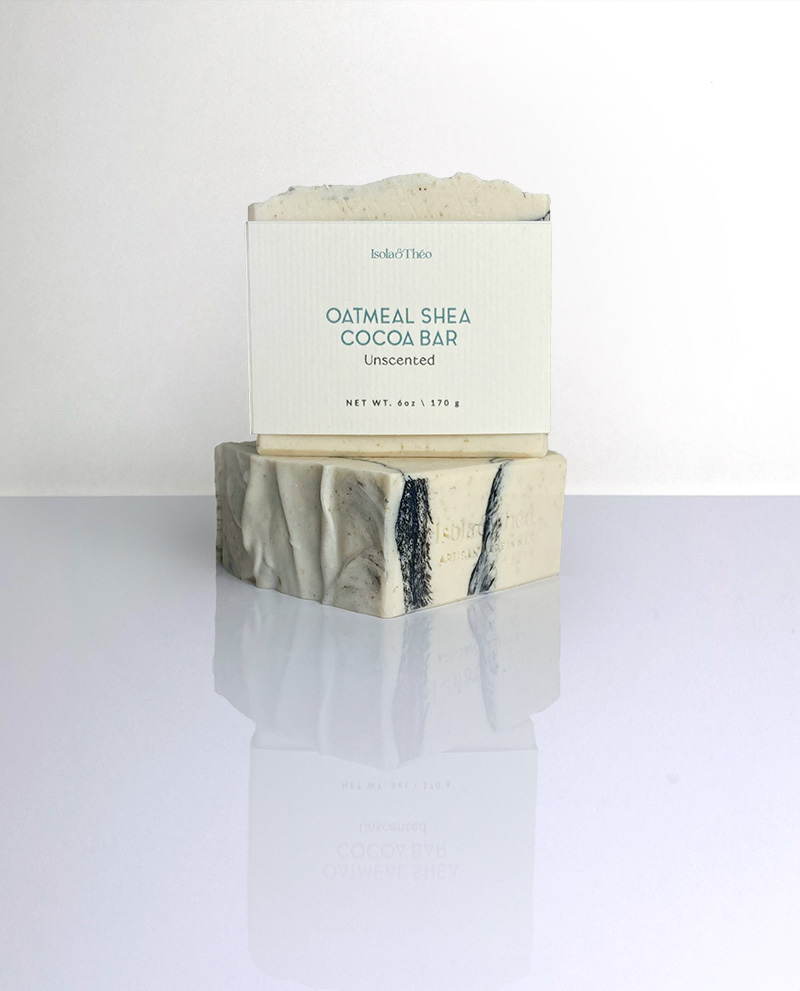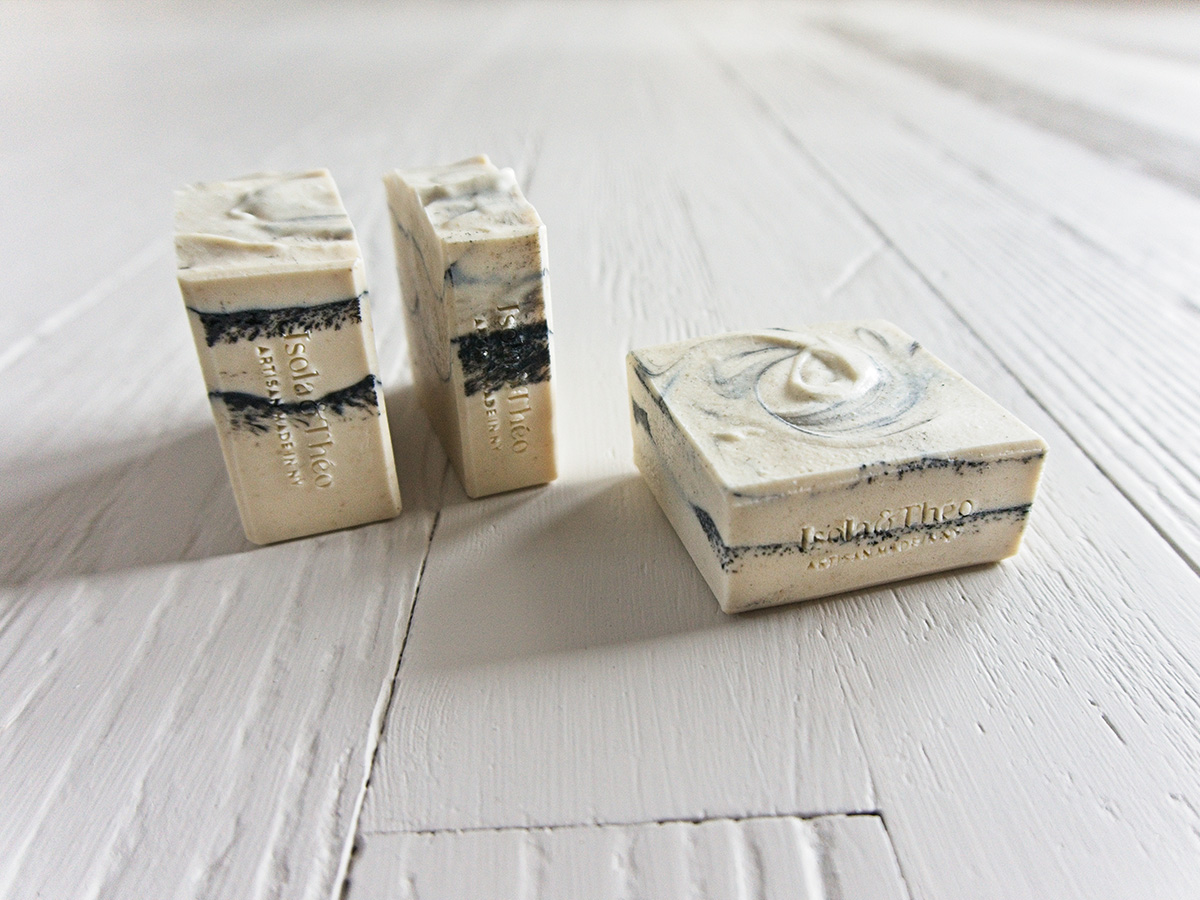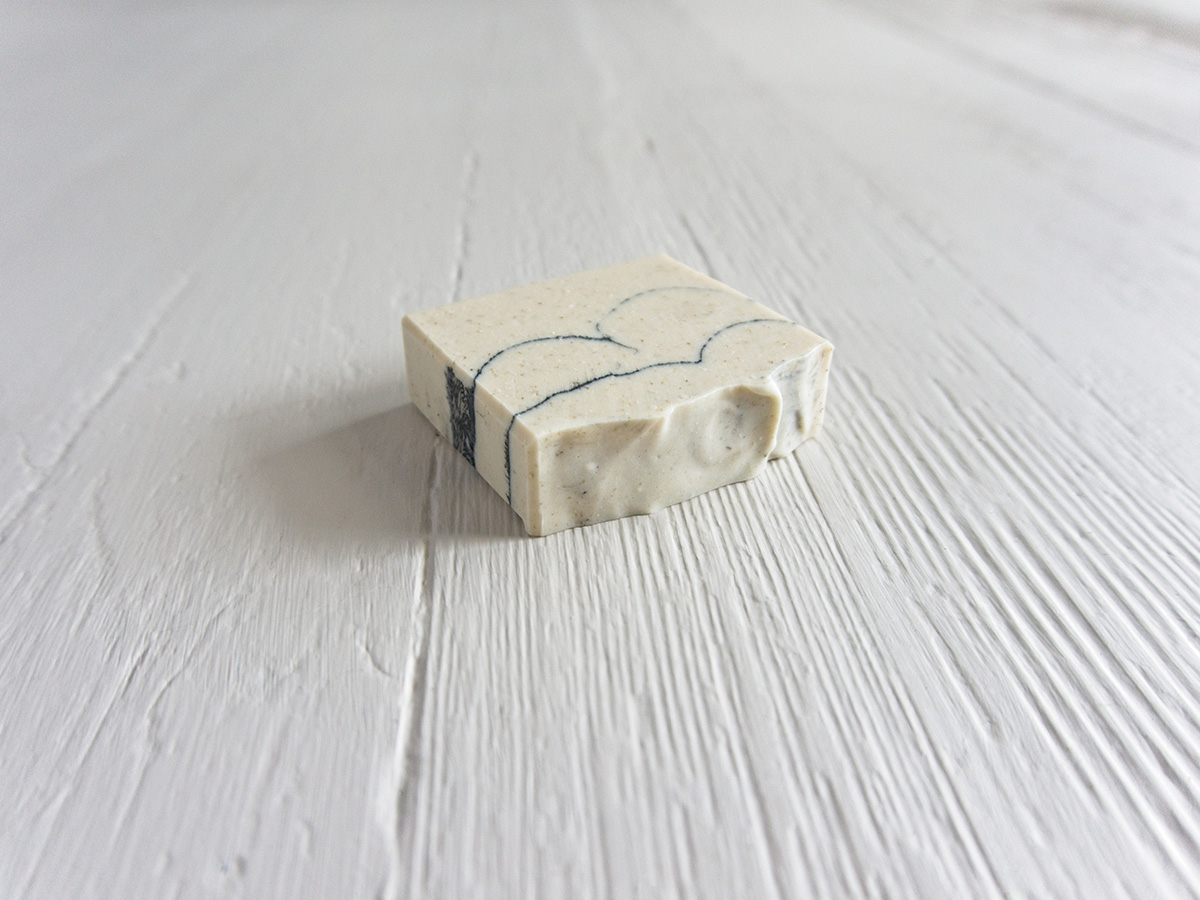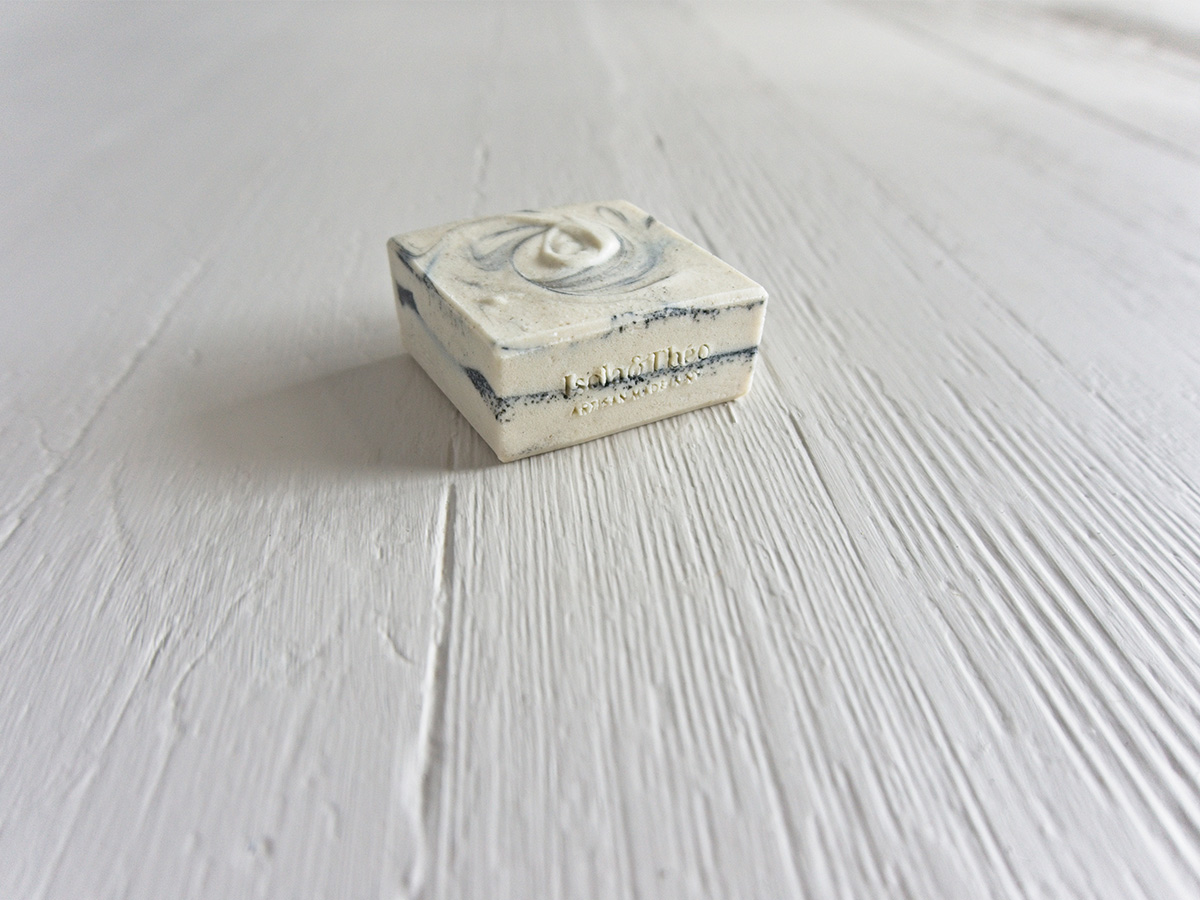Oatmeal Shea Cocoa Bar
From $9.00
Oatmeal, raw shea and cocoa butters soothe dry skin and help retain skin’s moisture. Fine graphic lines of coconut charcoal aides in drawing away impurities with added exfoliation. Unscented for sensitive skin.
The Switzerland of soap
It is our most gifted bar; pleasing both men and women, young and old, for all skin types. The reputation of soothing oatmeal makes and an unscented bar it makes for easy decision making gifting for anyone. The beauty of this bar is the balance of light exfoliation in the finely ground steel cut oats and charcoal with the moisture rich unrefined shea and cocoa butters. We choose unrefined butters and oils as we believe the sacrifice of color or scent that present is back seat to the nutrients that are still present in a raw butter or oil. Raw, no frills and unapologetic.
Cocoa butter is natural collagen booster, and helps to improve skin elasticity while softening. It is also high in Vitamin K and E.
Formulation
Olive oil (rich in Omega-9), highest in oleic acids is the star of this formulation creating a creamy, conditioning lather. It is a very nicely balanced, hard bar suitable for the shower. No bar should ever sit in a wet dish as this makes for a soggy, unhygienic bar.
All our products are formulated city and septic water safe.
The castor bean is an important plant source used in many industries from cosmetics to biodiesel and in an estimated 700 industrial applications. Grown primarily in India, the unpredictability of weather, increased cost of fertilizers and water and reduced margins saw a decline of interest from growers, despite the interest globally. Initiatives from stakeholders were launched to solve issues from living wages to providing knowledge for sustainable farming methods. As a fully biodegradable, low-cost product with productive yields with little competition to food crops, it is an ideal crop. It is not only a sustainable source, but has enormous potential as a petroleum alternative – many of which are found in mainstream skincare.
Virgin or unrefined coconut oil is produced by methods of expeller pressing (heat or steam) or cold pressing. We do not use hydrogenated coconut oil which use chemicals like hexane to extract. While monoculture of coconut oil can be associated with the impact of deforestation much like palm oil (with the exception of RSPO Palm), it’s a different type of tree that grows very well with other food crops and often is, while palm does not grow with other species. It also produces other products such as coconut milk and water, a great mulch source and charcoal. The charcoal we use in our soap comes from coconut. Much of the coconut oil imported to the US comes from Asia where farmers typically grow on their own holdings, but are as generationally poor as their predecessors. Keeping up with the demand for coconut, old trees are replaced with newer trees and chemical fertilizers are introduced for production. Exploiting children and monkey labor are also associated with this industry. For these reasons, we commit to using Certified Fair Trade coconut oil which regulates healthy soil practices and treats workers fairly.
We source our cocoa butter from fair trade coalitions that harvest sustainably with healthy soil practices. Cocoa trees are becoming increasingly stressed by climate change and have been linked with unfair and harsh child labor practices. The tree is difficult to cultivate and process which makes the butter extremely valuable.
<The impact of oats on the environment depends on the method of farming. As a cover crop, used for irrigation or used in rotation it is effective at capturing carbon, requires very little water, uses less land than animal land and breaks up soil for no-till farming. As a monocrop however which at this time is still typically used, it requires more land than most food crops and the land is generally tilled, releasing carbon again. Regenerative farming is taking a foodhold in every industry, so while there are challenges, the plant itself shows promise for a better future for the environment and those that sustain themselves on the land they work.Much of our skincare ingredients come from warmer climates. When we’re able to source anything from the Americas we opt for it every time. We source our olive oil from California. This decreases some burden of overseas shipping and the quality control of Fair Trade and soil initiatives in California are in alignment with our ethics. Because olive oil grows from trees that live season to season (in Europe there are massive trees), carbon capture is very effective with olive trees for absorption and long term storage. For our average 36 oz. large bottle of olive oil, it’s estimated to remove 22lbs. of carbon from our atmosphere. Olive oil extraction of cold pressing requires far less energy than some oils through refinement.
Shea Butter is extracted from the nut of the shea tree. The oils are separated by roasting and beaten with water to release the oils. The entire process is generally a women led initiative.
We firmly believe in fair trade and fair wage producers and will never be swayed by cheaper costs. When people are paid fairly, they live in safer environments and live more productive, happier lives. Learn more about where our industry ingredients come from and how we can make a concerted effort to fight climate change at Impact.
